Potřebujeme váš souhlas k využití jednotlivých dat, aby se vám mimo jiné mohly ukazovat informace týkající se vašich zájmů. Souhlas udělíte kliknutím na tlačítko „OK“.
ASTM E2574/E2574M-12a
Standard Test Method for Fire Testing of School Bus Seat Assemblies (Includes all amendments And changes 7/28/2017).
Automaticky přeložený název:
Standardní zkušební metoda pro požární zkoušení školního autobusu Seat shromáždění
NORMA vydána dne 1.7.2012
Informace o normě:
Označení normy: ASTM E2574/E2574M-12a
Poznámka: NEPLATNÁ
Datum vydání normy: 1.7.2012
Kód zboží: NS-45633
Počet stran: 10
Přibližná hmotnost: 30 g (0.07 liber)
Země: Americká technická norma
Kategorie: Technické normy ASTM
Kategorie - podobné normy:
Zápalnost a hořlavost materiálů a výrobků
Karosérie a součásti karosérie silničních vozidel
Autobusy
Anotace textu normy ASTM E2574/E2574M-12a :
Keywords:
bus, fire test, flame spread, gas burner, paper bag, school bus, transportation, ICS Number Code 13.220.40 (Ignitability and burning behaviour of materials and products), 43.040.60 (Bodies and body components), 43.080.20 (Buses)
Doplňující informace
| Significance and Use | ||||||||||||||||||||||||
|
In this test method fire test response characteristics of a school bus seat assembly are assessed following ignition by a square gas burner. This test method is similar in concept to a fire test currently used, and which has been in such use for many years, as the industry standard for flammability testing of school bus seats (see Appendix X1). However, in this test method the paper bag has been replaced by a gas burner as the ignition source. The US federal government has issued a flammability test applicable to interior materials in road vehicles, FMVSS 302. FMVSS 302 remains the only regulatory test for assessing fire-test-response characteristics of school bus seats. ASTM has issued Test Method D5132 in order to provide a more standardized way of conducting FMVSS 302. The test method described in this document provides a significantly higher challenge to school bus seats than the FMVSS 302 federal regulatory test. Therefore, any seat assembly that performs acceptably in this test is likely to meet the requirements of FMVSS 302. It is clear that those seat assemblies that exhibit little or no flame spread, short times to flame extinction and little mass loss in this test are likely to exhibit improved performance in an actual fire situation compared to seat assemblies that burn vigorously and have high mass loss. This test is primarily useful to distinguish products that, when exposed to these fire conditions, will become fully involved in fire from other products that will not. |
||||||||||||||||||||||||
| 1. Scope | ||||||||||||||||||||||||
|
1.1 This is a fire-test-response standard. 1.2 This test method assesses the burning behavior of upholstered seating used in school buses by measuring specific fire-test responses when a school bus seat specimen is subjected to a specified flaming ignition source under normally ventilated conditions. 1.3 The ignition source is a gas burner. 1.4 This fire test is primarily useful to distinguish products that, when exposed to an ignition source, will become fully involved in fire from other products that will not. 1.5 Data are obtained describing the burning behavior of the seat assemblies from a specific ignition source until all burning has ceased. 1.6 This test method does not provide information on the fire performance of upholstered seating in fire conditions other than those conditions specified. 1.7 The burning behavior is visually documented by photographic or video recordings, whenever possible. 1.8 The values stated in either SI units or inch-pound units are to be regarded separately as standard. The values stated in each system may not be exact equivalents; therefore, each system shall be used independently of the other. Combining values from the two systems may result in non-conformance with the standard. 1.9 This standard is used to measure and describe the response of materials, products, or assemblies to heat and flame under controlled conditions, but does not by itself incorporate all factors required for fire hazard or fire risk assessment of the materials, products or assemblies under actual fire conditions. 1.10 Fire testing is inherently hazardous. Adequate safeguards for personnel and property shall be employed in conducting these tests. 1.11 This standard does not purport to address all of the safety concerns, if any, associated with its use. It is the responsibility of the user of this standard to establish appropriate safety and health practices and determine the applicability of regulatory limitations prior to use. |
||||||||||||||||||||||||
| 2. Referenced Documents | ||||||||||||||||||||||||
|
Podobné normy:
Historická
1.1.2013
Historická
1.1.2007
Historická
1.1.2010
Historická
1.5.2014
Historická
1.6.2010
Historická
1.3.2010


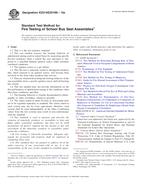
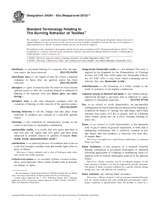 ASTM D4391-93a(2013)..
ASTM D4391-93a(2013)..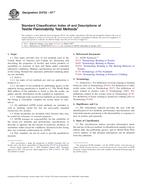 ASTM D4723-07e2
ASTM D4723-07e2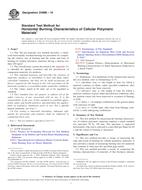 ASTM D4986-10
ASTM D4986-10 ASTM D5048-14
ASTM D5048-14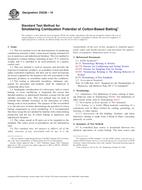 ASTM D5238-10
ASTM D5238-10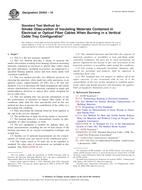 ASTM D5424-10
ASTM D5424-10
 Cookies
Cookies
